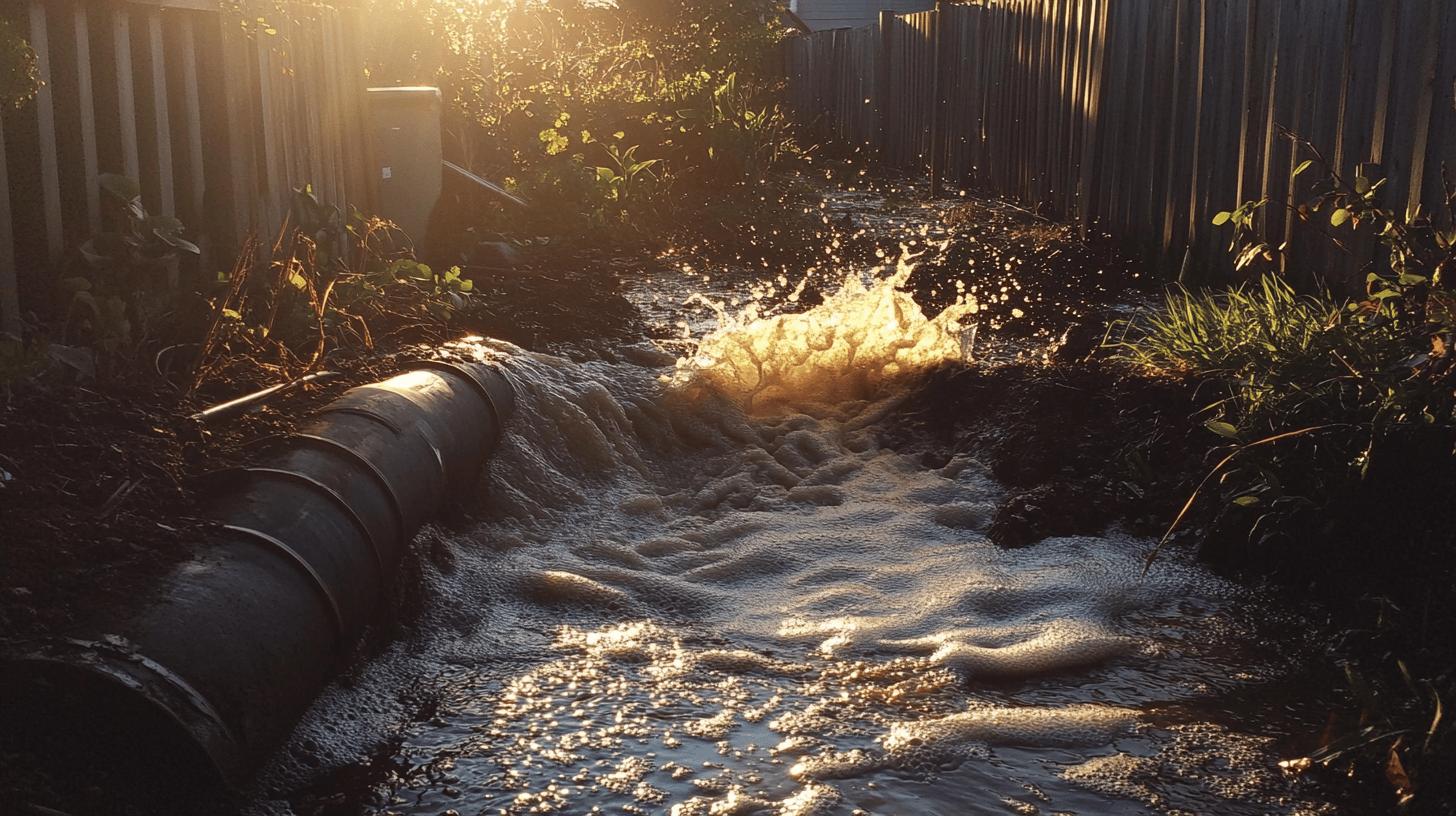TL;DR:
- Immediate Actions:
- Turn off water supply.
- Avoid plumbing use.
- Inspect for odors, wet spots, and slow drains.
- Alert neighbors.
- Document the issue.
- Symptoms of Broken Sewer Line:
- Frequent backups, slow drains.
- Foul odors, gurgling toilets, wet spots.
- Repair Options:
- Pipe Relining: $4,000-$12,000.
- Pipe Bursting: $6,000-$20,000.
- Traditional Trenching: $3,000-$25,000.
- Cost Factors: Damage extent, repair method, pipe location, labor, material costs.
- Hire a Professional: For expertise, safety, and effective long-term solutions.
- Preventative Measures: Manage tree roots, regular inspections, proper waste disposal.
Is your yard suddenly hosting mysterious wet spots, or are your drains gurgling like they’re trying to speak? A broken sewer line could be the issue, and ignoring it might lead to severe damage and costly repairs. Acting quickly can save you a lot of headaches and a significant amount on repair bills. Let’s dive into the immediate steps you need to take if your sewer line is broken, ensuring that you minimize damage and maintain the health of your home’s plumbing system.
Immediate Actions for a Broken Sewer Line
Acting quickly when you suspect a broken sewer line is essential. It helps minimize damage and repair costs. Ignoring the issue can lead to extensive property damage and health hazards.
Immediate Actions to Take:
- Turn off the water supply to prevent further damage.
- Avoid using plumbing fixtures to reduce the risk of backups.
- Inspect your property for signs like foul odors, slow drains, gurgling noises from toilets, and wet spots in the yard.
- Alert your neighbors if they might be affected.
- Document the issue with photos and notes for insurance and repair purposes.
Contact a professional plumber as soon as possible. DIY repairs can worsen the situation, leading to more expensive fixes. Professional plumbers have the expertise and tools to diagnose and repair sewer line issues efficiently.
Recognizing Symptoms of a Broken Sewer Line
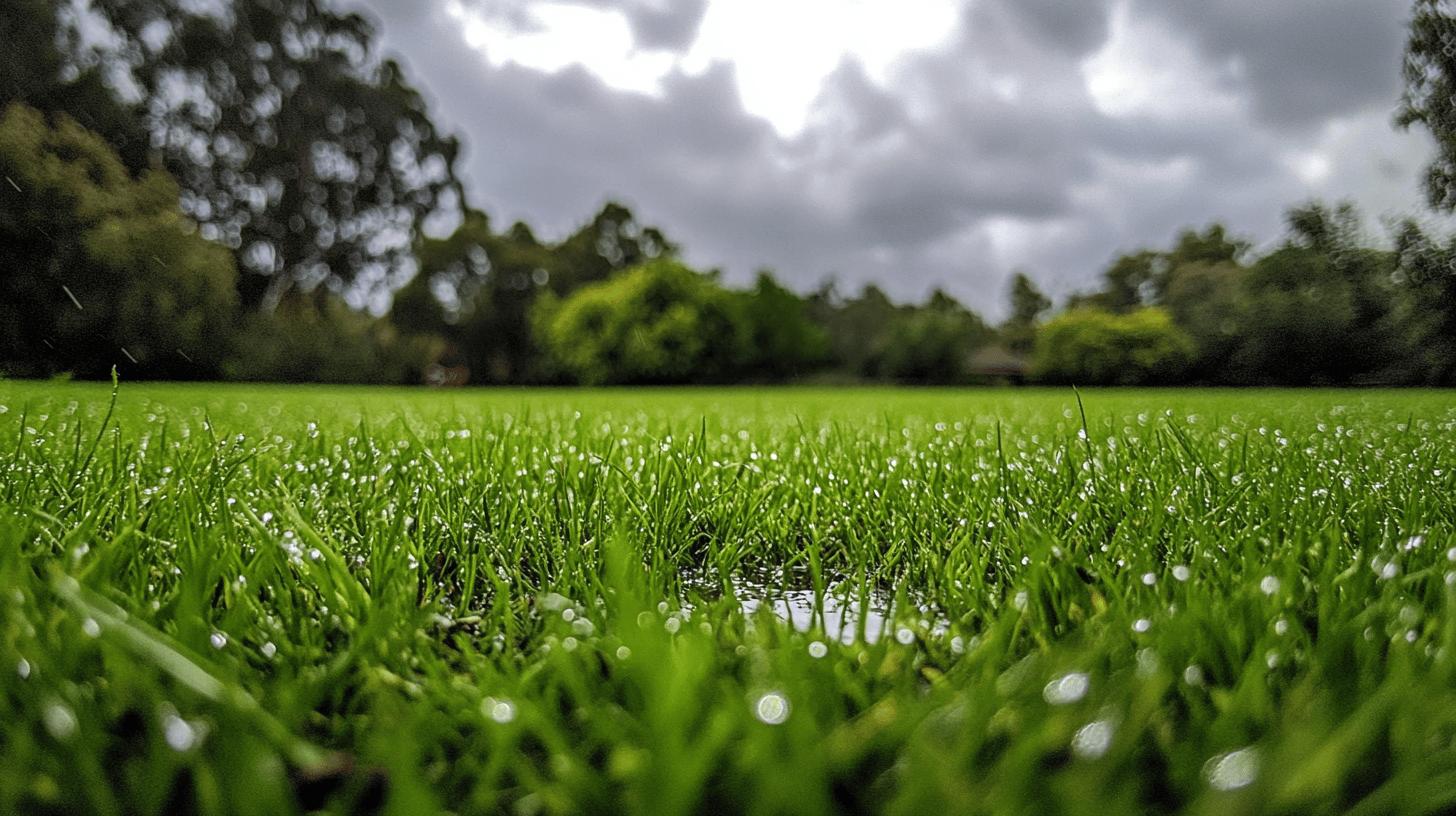
Detecting a broken sewer line early is crucial. Unattended issues can escalate, affecting your property and health. Knowing the signs of a broken sewer line can help you act promptly.
Frequent backups are a clear sign of sewer line problems. If multiple drains in your home are slow or backing up, this could indicate a blockage or damage in the sewer line. Foul odors around your property, especially near drains or in the yard, are another indication. These smells often result from sewage not properly exiting the system.
Gurgling toilets are another symptom not to ignore. When air is trapped in the sewer line due to a blockage or break, it can cause bubbling or gurgling noises. Wet spots in your yard, especially when it hasn’t rained, suggest a leaking or broken sewer line. These areas might be soggy or have a foul smell.
Common Symptoms of a Broken Sewer Line:
- Frequent backups in multiple drains
- Slow drains throughout the house
- Foul odors near drains or in the yard
- Gurgling noises from toilets
- Unexplained wet spots in the yard
- Lush patches of grass over the sewer line
- Rodent or insect infestations near sewage areas
To confirm suspicions of a broken sewer line, a video inspection is highly effective. This involves inserting a camera into the sewer line to visually assess any damage or blockages. Video inspections provide a precise location and understanding of the problem, allowing for more accurate and efficient repairs. Hiring a professional plumber for this task ensures an expert diagnosis and a clear path to resolution.
Repair Options for a Broken Sewer Line
When facing a broken sewer line, professional repair is crucial. DIY repairs might seem appealing to save costs, but they often lead to further complications and higher expenses. Professionals have the specialized tools and expertise required to assess and repair the damage, ensuring long-lasting solutions.
Pipe Relining
Pipe relining repairs sewer pipes without extensive digging. This trenchless technology involves inserting a resin-coated liner into the damaged pipe, which hardens to form a new, durable pipe within the old one. This method is ideal for minor to moderate damage and is less disruptive to your property. Pipe relining typically costs between $4,000 and $12,000, depending on the extent of the damage and the length of the pipe.
Pipe Bursting
Pipe bursting is another trenchless technique used for more severe damage, where the existing pipe is too compromised to be relined. It involves breaking the old pipe apart while simultaneously pulling a new pipe into place. This method requires minimal excavation and is effective for replacing entire sewer lines. The cost for pipe bursting ranges from $6,000 to $20,000, influenced by factors like pipe diameter and the complexity of the installation.
Traditional Trenching
Traditional trenching remains a viable option for repairing or replacing sewer lines, especially when trenchless methods are not feasible. This technique involves excavating the ground to access the broken pipe, allowing for thorough inspection and replacement. While trenching can be more disruptive to landscapes and structures, it sometimes offers the most comprehensive solution for extensive damage. Costs for traditional trenching can vary from $3,000 to $25,000, depending on the depth and complexity of the excavation.
| Repair Method | Cost Range |
|———————-|———————–|
| Pipe Relining | $4,000 – $12,000 |
| Pipe Bursting | $6,000 – $20,000 |
| Traditional Trenching| $3,000 – $25,000 |
Understanding these repair options helps in making informed decisions about addressing a broken sewer line. Consulting with professional plumbers will provide clarity on the best method based on the specific circumstances of the damage.
Cost Considerations for Sewer Line Repair
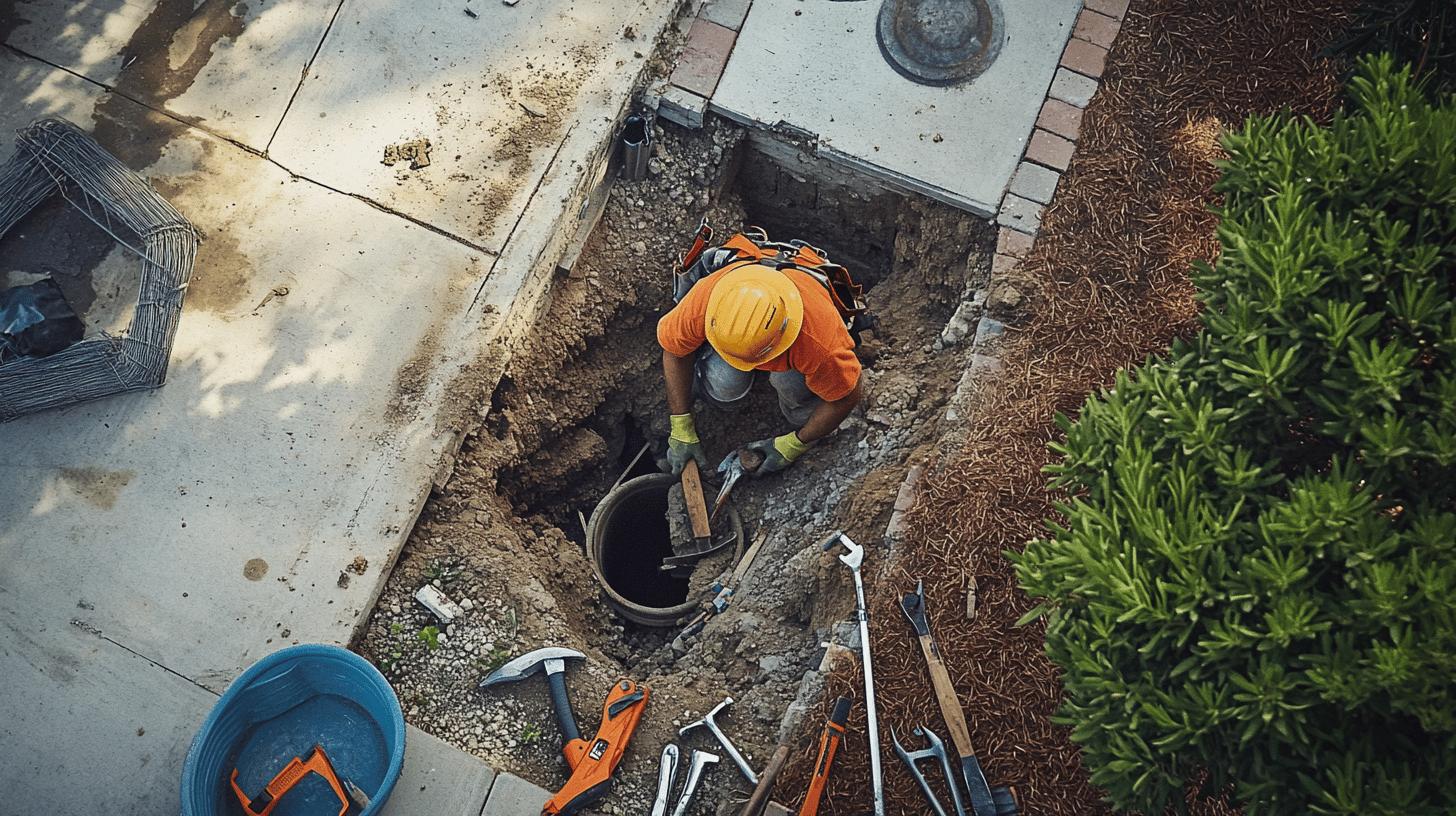
Understanding the costs associated with sewer line repair is essential for homeowners. On average, minor repairs can range from $1,000 to $4,000, while extensive replacements can escalate up to $25,000. These costs vary based on the repair method, the extent of the damage, and the pipe’s location.
The extent of the damage influences the cost of repairs. Minor cracks or blockages might be resolved with less invasive methods like pipe relining, which tends to be on the lower end of the cost spectrum. More severe damage requiring complete pipe replacement, especially if trenching is needed, will drive up the expenses.
The repair method chosen also plays a crucial role in the overall cost. Trenchless techniques like pipe relining and pipe bursting are generally less disruptive and can be more cost-effective than traditional trenching, although they still come with a significant price tag. The location of the pipe—whether it’s under a landscaped yard, driveway, or foundation—can add complexity and cost to the repair process.
Factors Influencing Sewer Line Repair Costs:
- Extent of damage: Minor cracks vs. complete pipe replacement
- Repair method: Trenchless technology vs. traditional trenching
- Pipe location: Under yard, driveway, or foundation
- Labor costs: Variations based on region and complexity
- Material costs: Type and quality of materials used
It’s advisable to seek estimates from professional plumbers to get a clearer picture of the potential costs. Professional evaluations will provide a detailed assessment of the damage and the most suitable repair method, helping you make an informed decision and avoid unexpected expenses.
When to Call a Professional Plumber for Sewer Line Issues
Attempting to repair a broken sewer line yourself can be risky and often leads to more significant damage. DIY repairs might seem cost-effective initially, but without the proper knowledge and tools, you can worsen the situation, resulting in higher repair costs and potential health hazards.
Reasons to Hire a Professional Plumber:
- Expertise: Licensed plumbers have specialized training to diagnose and repair sewer line issues accurately.
- Proper Equipment: Professionals use advanced tools and technology, like sewer cameras, to identify and fix problems efficiently.
- Long-term Solutions: Professional repairs are more durable and reliable, reducing the likelihood of recurring issues.
- Safety Compliance: Licensed plumbers adhere to local codes and regulations, ensuring your home remains safe and compliant.
Finding a qualified plumber involves checking for licenses, reading reviews, and asking for estimates. Look for experienced contractors with a solid reputation in sewer line repairs to ensure you receive the best service possible.
Preventative Measures and Maintenance for Sewer Lines
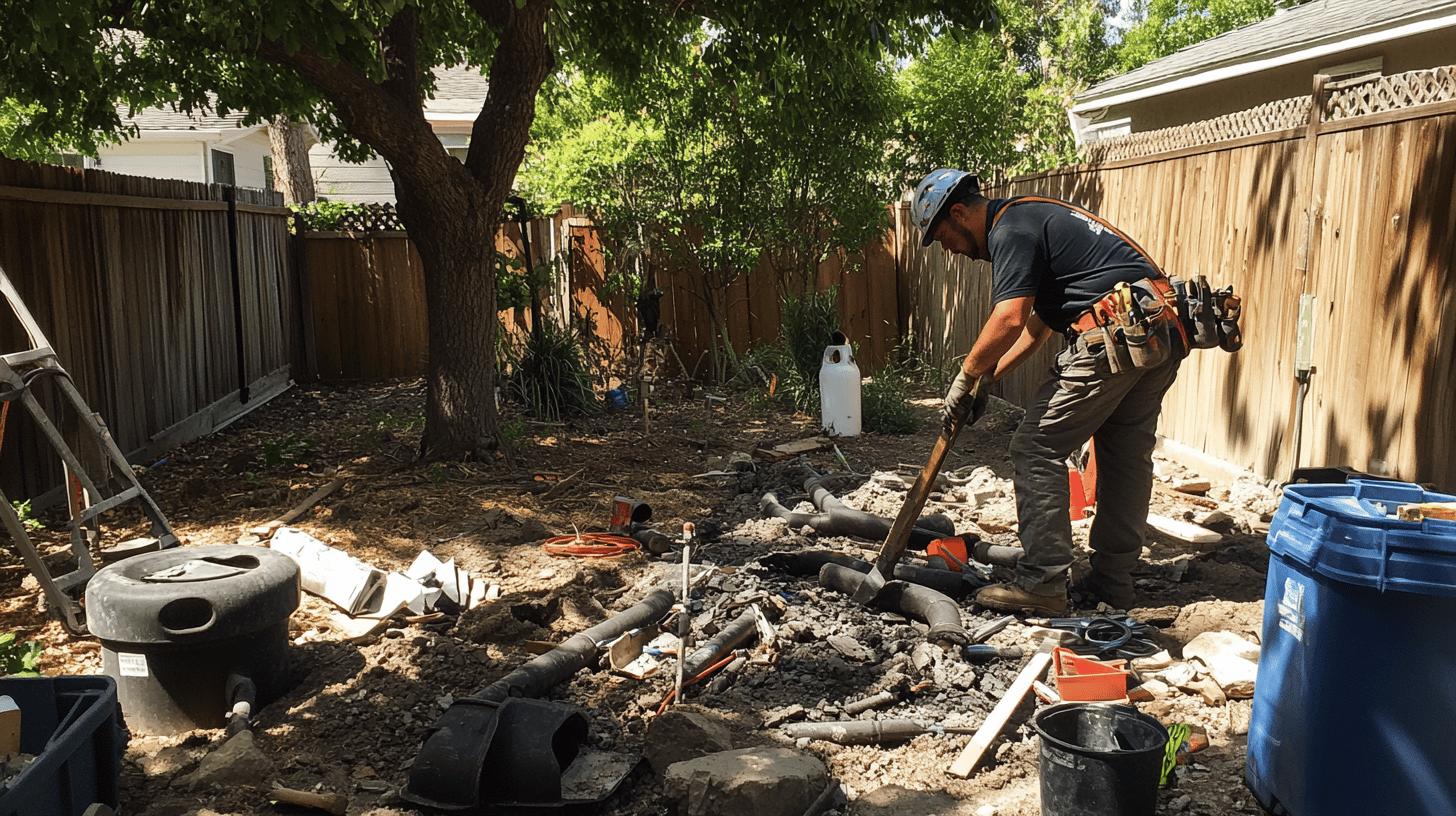
Regular maintenance of your sewer lines is crucial to avoid unexpected and costly repairs. By keeping your sewer system in good condition, you reduce the risk of breaks and blockages that can lead to significant property damage and health hazards. One common cause of sewer line damage is tree roots infiltrating the pipes. Managing these roots and conducting timely inspections can save you from major plumbing issues.
Maintenance Tips:
- Manage Tree Roots: Regularly inspect and remove roots near sewer pipes to prevent infiltration.
- Regular Inspections: Schedule professional inspections to detect early signs of wear or damage.
- Proper Waste Disposal: Avoid flushing non-biodegradable items down the toilet to prevent clogs.
- Install Backflow Prevention Devices: These devices protect your home from sewage backups.
- Monitor Water Pressure: High water pressure can damage pipes; ensure it remains at a safe level.
| Preventative Measure | Benefit |
|———————————-|—————————————|
| Manage Tree Roots | Prevents root infiltration and pipe damage |
| Regular Inspections | Early detection of potential issues |
| Proper Waste Disposal | Reduces risk of clogs and backups |
| Install Backflow Prevention Devices | Protects against sewage backups |
| Monitor Water Pressure | Prevents pipe damage from excessive pressure |
Regularly implementing these preventative measures can significantly extend the lifespan of your sewer lines, ensuring they function smoothly and efficiently.
Final Words
Acting quickly when your sewer line breaks is crucial to prevent further damage. Recognizing symptoms early, such as foul odors and slow drains, helps in timely intervention. Various repair options, from pipe relining to traditional trenching, offer flexible solutions based on the damage and budget.
Understanding cost factors, like damage extent and repair methods, helps in preparing for expenses. Calling a professional plumber ensures reliable, long-term repairs.
Regular maintenance, including tree root management and inspections, can prevent issues. Tackle a sewer line broken problem promptly to avoid costly consequences and maintain a smoothly running home.
FAQ
What are the symptoms of a broken sewer line?
Symptoms of a broken sewer line include foul odors, slow drains, frequent backups, gurgling toilets, and wet spots in the yard.
Is a broken sewer line covered by insurance?
Coverage for a broken sewer line depends on your insurance policy. Check with your insurer to determine if your plan includes sewer line damage.
How can you fix a broken sewer line?
Fixing a broken sewer line can involve methods like pipe relining, pipe bursting, or traditional trenching. Each method varies in cost and complexity.
How dangerous is a broken sewer line?
A broken sewer line is dangerous as it can lead to water damage, mold growth, and health risks from sewage exposure. Immediate repair is critical.
Who is responsible for sewage pipes?
Responsibility for sewer pipes typically falls on the property owner up to the point where the pipes connect with public systems. Check local regulations for specifics.
How do you fix a broken sewer pipe underground?
Fixing an underground sewer pipe usually requires professional methods like pipe relining, pipe bursting, or traditional excavation. Consult a licensed plumber for the best approach.
What happens if your sewer line breaks?
If your sewer line breaks, you may experience backups, foul odors, yard flooding, and health hazards. Turn off water supply and contact a professional plumber immediately.
How serious is a cracked sewer pipe?
A cracked sewer pipe is serious due to potential property damage, health risks, and high repair costs. Early detection and repair are crucial for minimizing impact.
How long does it take to repair a broken sewer line?
Repair duration for a broken sewer line varies from a few hours to several days, depending on the method used and extent of the damage.
What is the repair cost for a broken sewer line?
Repair costs for a broken sewer line range from $1,000 to $25,000, influenced by the repair method, extent of damage, and pipe location.
Are DIY repairs safe for broken sewer lines?
DIY repairs for broken sewer lines are risky and can lead to further damage. It is advisable to hire a licensed and experienced plumber for safe and effective repairs.
